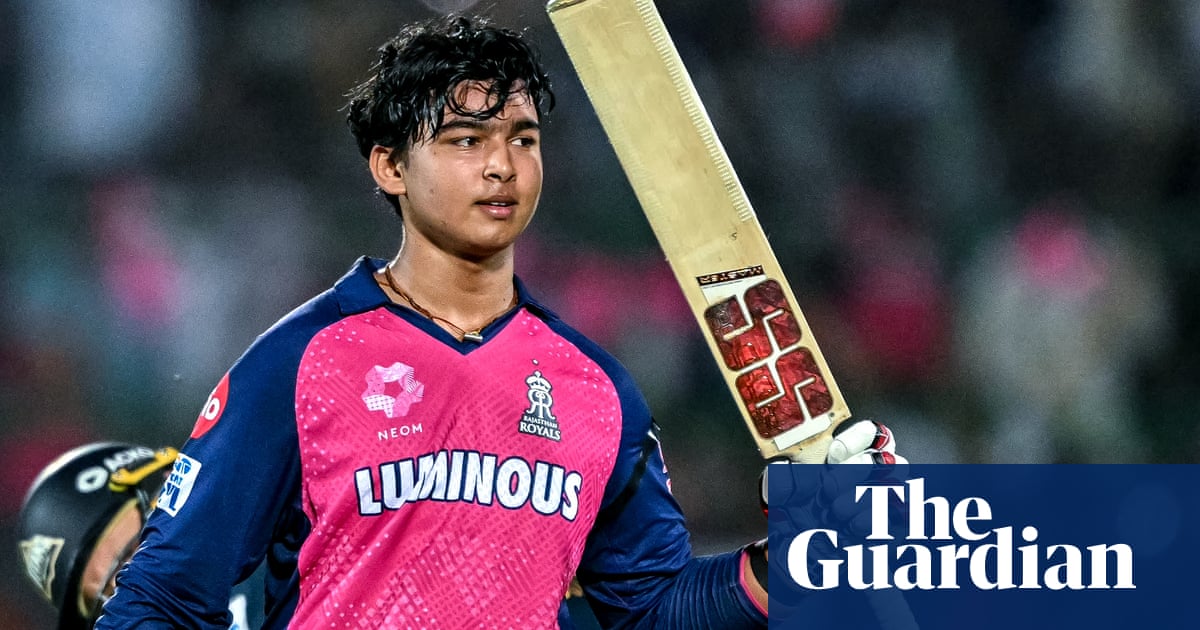The article presents a significant achievement in the world of cricket, highlighting the remarkable performance of a young player, Vaibhav Suryavanshi. His record as the youngest centurion in men’s T20 cricket not only marks a personal milestone but also positions him as a promising talent in the Indian Premier League (IPL). This narrative serves multiple purposes, from celebrating youthful talent to promoting the IPL brand.
Impact on Public Perception
This news aims to create a sense of excitement and optimism within the cricket community and the general public. By focusing on Suryavanshi's achievements, the article fosters a narrative of hope and inspiration, especially for young athletes. The emphasis on his hard work and talent suggests that success is attainable for those who are dedicated, thereby encouraging youth engagement in sports.
What May Be Overlooked
While celebrating this achievement, the article does not delve into potential pressures that such expectations may place on a young athlete. The intense scrutiny and expectations from the media and fans could overshadow Suryavanshi's development as a player. This omission raises concerns about the sustainability of his success and the mental health implications for young athletes in high-stakes environments.
Comparison with Other News
In the context of other sports news, this story could be seen as a strategy to draw attention away from less favorable narratives, such as controversies surrounding other players or teams. By spotlighting an underdog story, the IPL and cricket authorities can shift the focus toward positive developments within the sport, fostering a more favorable public image.
Perception of the IPL
The IPL is often viewed as a platform for showcasing talent, but it also faces criticism for commercialization and the pressures it places on players. This article reinforces the IPL's image as a breeding ground for future stars while simultaneously glossing over the challenges that come with such rapid commercialization of young talent.
Potential Socioeconomic and Political Implications
The celebration of young athletes can stimulate interest in sports, which might encourage investments in youth programs and infrastructure. This could lead to improved socioeconomic conditions in regions where sports are a primary focus. Politically, success stories like Suryavanshi's can be leveraged to promote policies supporting youth engagement in sports, aligning with broader developmental goals.
Target Audience
The article is likely to resonate with youth, sports enthusiasts, and parents invested in their children's athletic pursuits. By presenting a relatable and inspiring figure in Suryavanshi, it appeals to those who aspire to achieve greatness in sports, fostering a sense of community among supporters of youth sports.
Impact on Financial Markets
While this specific achievement may not have direct implications for stock markets, the overall success and engagement in IPL can influence financial sentiments toward franchises and associated businesses. Increased viewership and public interest may lead to higher revenues for sponsors and teams, which can be crucial for stakeholders in the sports industry.
Global Power Dynamics
This story reflects India's growing influence in the sports arena, particularly in cricket. As one of the biggest cricketing nations, India's investment in young talent like Suryavanshi reinforces its position in global sports discussions. It connects to broader themes of national pride and identity in sports.
Use of AI in News Reporting
The article may not explicitly indicate the use of AI; however, it is possible that AI tools were used to analyze data on player performance or to generate content that aligns with current trends in sports reporting. AI models could have influenced the framing of Suryavanshi's achievements and the overall tone of the reporting, emphasizing positivity and inspiration.
Manipulative Elements
The piece does not overtly manipulate information but frames Suryavanshi's story in a way that emphasizes triumph and potential. This could be seen as a strategic move to attract viewership and engagement, showcasing the brighter side of sports while potentially downplaying the pressures faced by young athletes.
In conclusion, the article serves to celebrate a historic moment in cricket while also promoting the IPL's image as a nurturing ground for talent. However, it overlooks the complexities and pressures that accompany such rapid success in a competitive environment. The article is reliable in terms of factual reporting but may present a somewhat idealistic view of youth success in sports.
